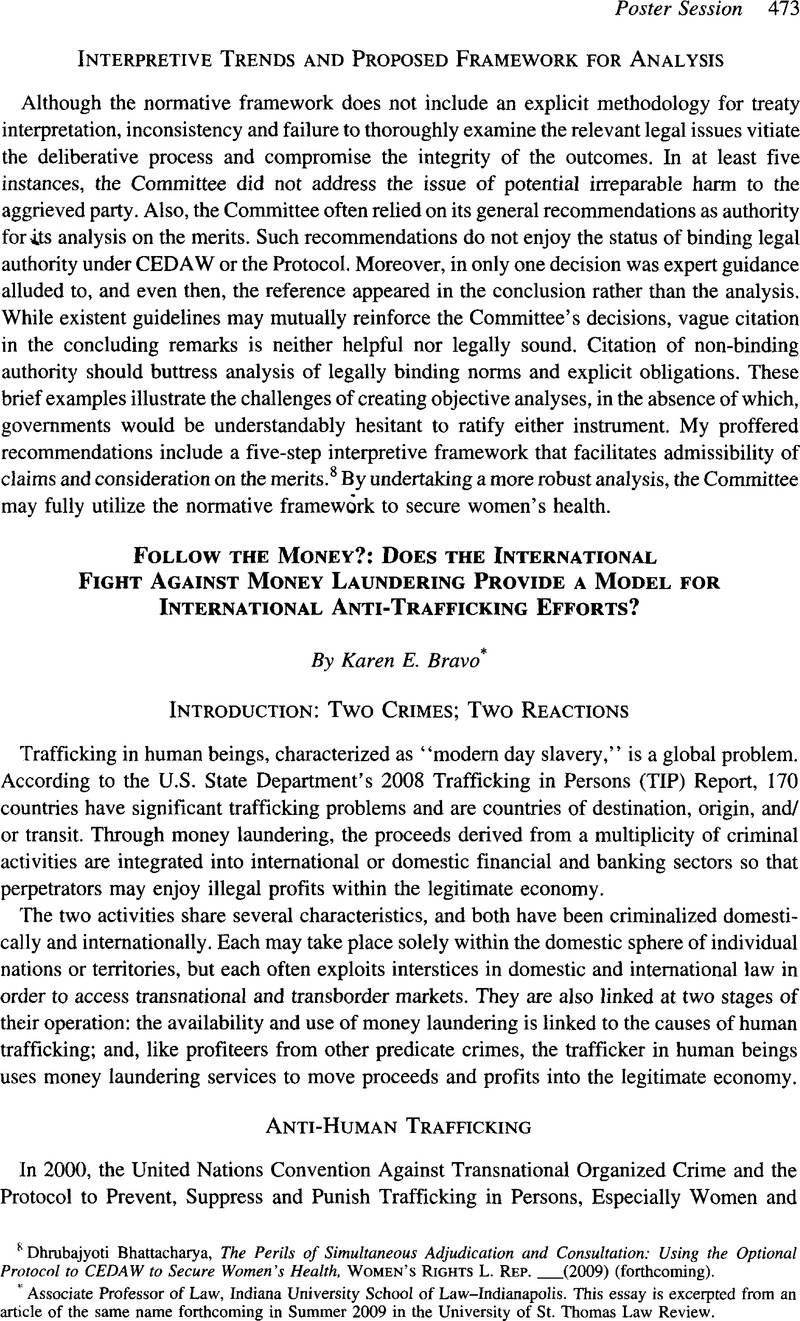No CrossRef data available.
Published online by Cambridge University Press: 28 February 2017

1 The 2008 TIP Report included fourteen countries ranked Tier 3 (non-compliant) and forty countries ranked in the Tier 2 watch list (non-compliant, but making efforts in that direction). A number of these countries had been listed at the same noncompliant levels in previous TIP Reports. In addition, although estimates of the number of trafficking victims have declined over the years, each year, the U.S. TIP Report adds new countries with trafficking problems.
2 See FATF, Report on Non-Cooperative Countries and Territories (2000). In two subsequent reports, the FATF identified countries and territories that the organization would investigate and review in order to determine NCCT designation. See FATF, Review to Identify Non-Cooperative Countries or Territories: Increasing the Worldwide Effectiveness of Anti-Money Laundering Measures (2000, 2001, and 2002).
3 I have asserted elsewhere that the dominant conceptual and legal frameworks deployed to combat the trafficking in humans, including the law enforcement framework, are inadequate. See Bravo, Karen E. Exploring the Analogy Between Modern Trafficking in Humans and the Trans-Atlantic Slave Trade, 25 B. U. Int’l L. J. 207 (2007)Google Scholar. However, I have acknowledged the value of those frameworks even as I have advocated a more structural assault on the trade. Bravo, Karen E. Free Labor! A Labor Liberalization Solution to Modern Trafficking in Humans, 18 I. Trans. L. & Contemp. Probs. 545 (2009)Google Scholar. The international anti-money laundering model analyzed here, if adapted to the international fight against human trafficking, would strengthen the implementation of the already dominant law enforcement approach.